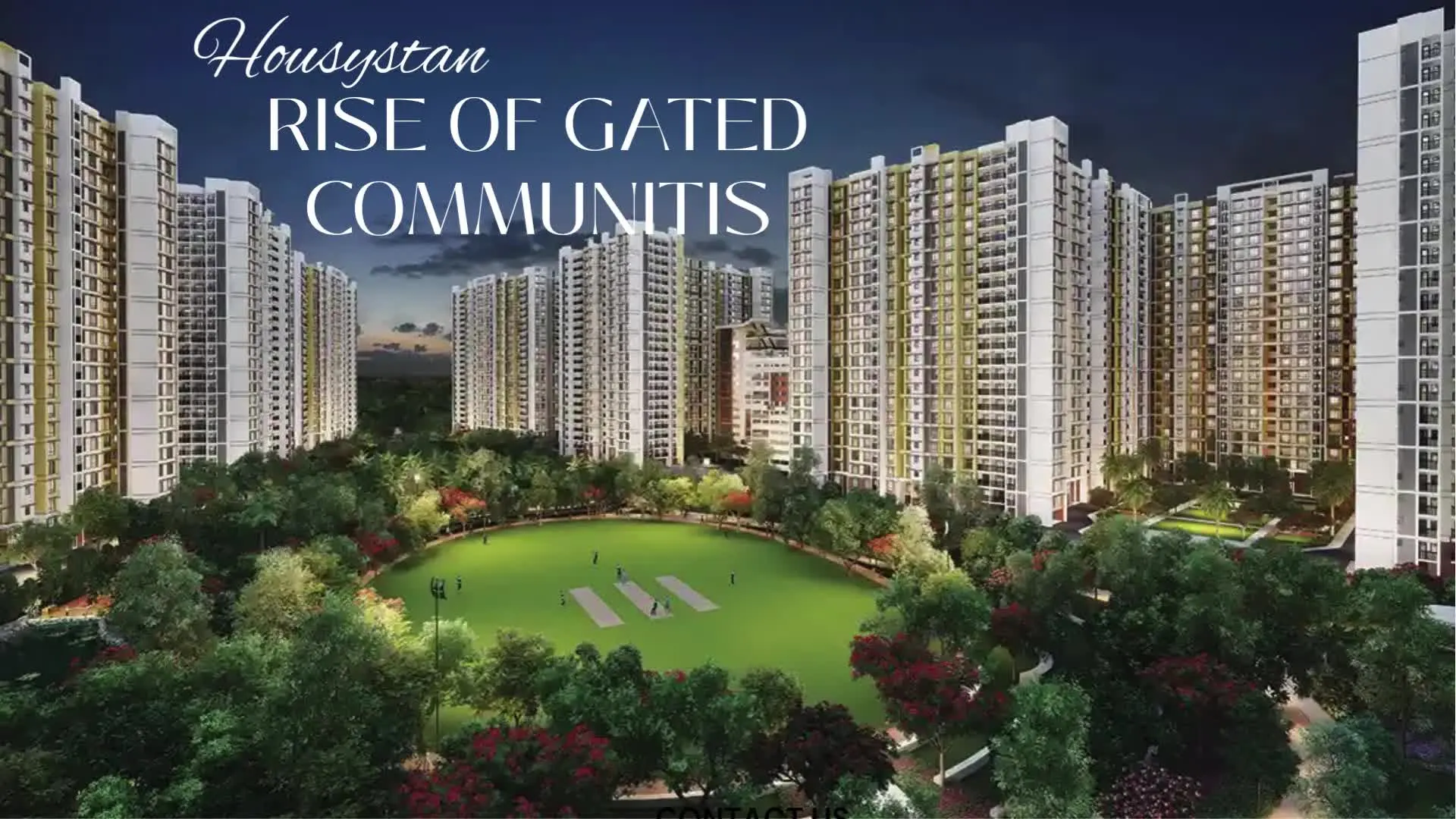Rise of Gated Communities
Read latest blogs and articles from Housystan

The Information mentioned here was last updated on:
11/12/2025Understanding the Rise of Gated Communities: A Growing Residential Trend
Gated communities have gained significant attention and popularity in recent years, transforming the landscape of residential living in many parts of the world. This surge in interest has been driven by a variety of factors, which we will explore in detail throughout this article. By understanding what gated communities offer and why they are becoming a preferred choice for many, one can better appreciate this modern residential trend.
What Are Gated Communities?
- Verified Tenants/Buyers
- Unlimited Property Listing
- Zero subscription/charges fee
Gated communities are residential areas that restrict access to the general public through manned security or physical barriers, such as walls and gates. These communities often boast a range of shared amenities and provide enhanced security, offering residents a sense of privacy and exclusivity.
The concept of gated communities is not new. Historically, they can be traced back to ancient walled cities and medieval castles designed to protect inhabitants from invaders. In the modern era, their purpose has shifted from defense to comfort and safety, catering to those who seek a serene and controlled environment.
The Appeal of Security
One of the primary reasons people choose gated communities is the heightened sense of security they provide. With controlled access points, 24/7 security personnel, and surveillance systems, residents feel safer from theft, vandalism, and other potential threats. This assurance of safety is particularly appealing to families with children and retirees who prioritize peace of mind.
Moreover, the reduction of unauthorized traffic in these communities can help decrease the likelihood of external disturbances and crime, creating a safer neighborhood overall. This peace of mind extends beyond physical safety to include protection of personal property, with many gated communities employing protocols to monitor visitor entry and exit.
Enhanced Amenities and Lifestyle Offerings
Gated communities often feature a variety of amenities that contribute to an enhanced lifestyle. Common offerings include swimming pools, fitness centers, parks, walking trails, clubhouses, and golf courses. These facilities are usually exclusive to residents, providing convenient recreational options right at one's doorstep.
Such amenities are designed to promote a sense of community and foster interaction among residents. Scheduled events, activities, and clubs within these spaces help cultivate relationships and create a cohesive community atmosphere.
Additionally, the presence of maintained communal spaces often leads to aesthetically pleasing environments where residents take pride in their surroundings. This ambiance is a draw for many, particularly those who value appearance and community engagement.
Privacy and Exclusivity
In a world where privacy is increasingly elusive, gated communities offer a certain level of seclusion that is hard to find elsewhere. By restricting access to outsiders, residents can enjoy a peaceful and uninterrupted lifestyle. For individuals who value solitude and wish to avoid unwelcome solicitors, this aspect of gated living is particularly attractive.
Exclusivity also plays a role in the appeal of gated communities. The prestige associated with living in an upscale community can be appealing to many, acting as a status symbol. The feeling of being part of a select group can enhance the living experience for those who appreciate such recognition.
Property Value and Investment Potential
Gated communities are often located in desirable areas, and their unique features can help maintain or even increase property values over time. The exclusivity, amenities, and security measures contribute to a perceived higher quality of life, making these properties attractive to potential buyers.
This desirability can lead to increased demand and subsequently, a potential rise in property values. Real estate investors might find gated communities appealing due to their stability and relatively safe investment prospects. The standard of maintenance and regulations typically enforced within these communities also ensures that the area remains well-kept, further preserving property values.
Future Outlook and Sustainability
As urban areas continue to grow and evolve, the demand for gated communities is likely to persist, or even increase. However, this trend also raises questions about sustainability and social impact.
Critics argue that gated communities can contribute to urban sprawl and segregation, isolating residents from the broader community. There are concerns about the environmental impact of large, enclosed developments as well, with extensive land use and infrastructure demands.
In response to these concerns, some developers are exploring more sustainable approaches to community development. Innovations such as integrating green spaces, emphasizing eco-friendly construction, and promoting community integration with surrounding areas are emerging as ways to address potential downsides.
Challenges of Gated Living
Despite their many advantages, gated communities are not without challenges. The cost of living in such areas is often higher due to homeowners' association fees, which cover the maintenance of amenities and security services. These fees can be a significant consideration for potential residents, especially when considering long-term affordability.
Furthermore, the sense of isolation from the external community can be a downside for some, hindering interaction and connection with the wider society. The closed nature of gated communities can sometimes lead to a lack of cultural diversity and exposure, creating a homogenous social environment that might not appeal to all.
Gated communities also face the challenge of adapting to changing demographics and lifestyle preferences. As younger generations prioritize experiences and inclusivity, meeting their needs will require a shift in how these communities operate and engage with residents.
Conclusion
While the rise of gated communities can be understood through the lens of security, lifestyle, and exclusivity, it's crucial to consider the broader implications of this trend. As more individuals seek out these enclaves, the way they are designed and integrated into larger urban areas will significantly impact their role in future residential living. Exploring sustainable and inclusive practices will be key in ensuring that gated communities continue to serve the evolving needs and values of society.